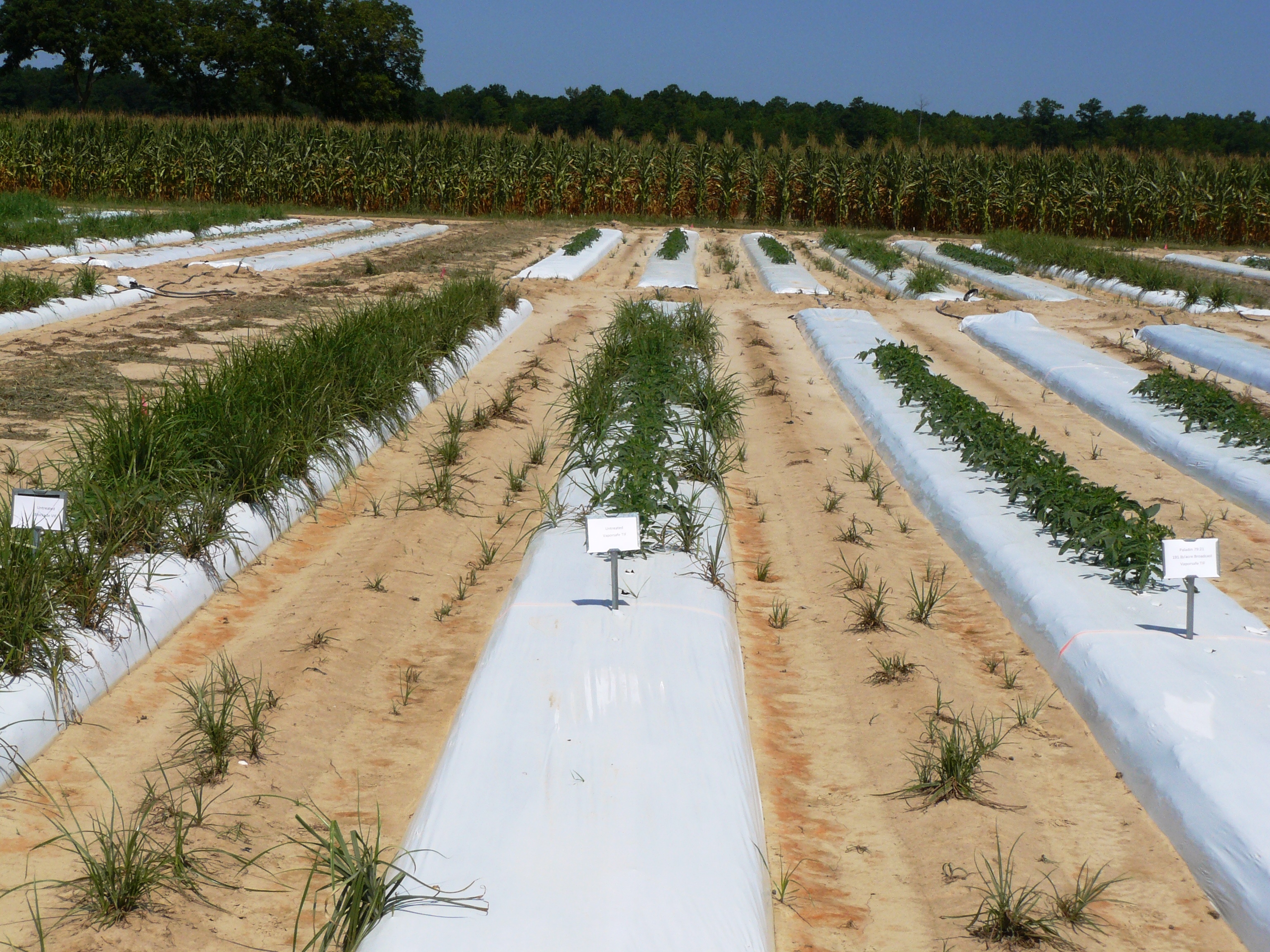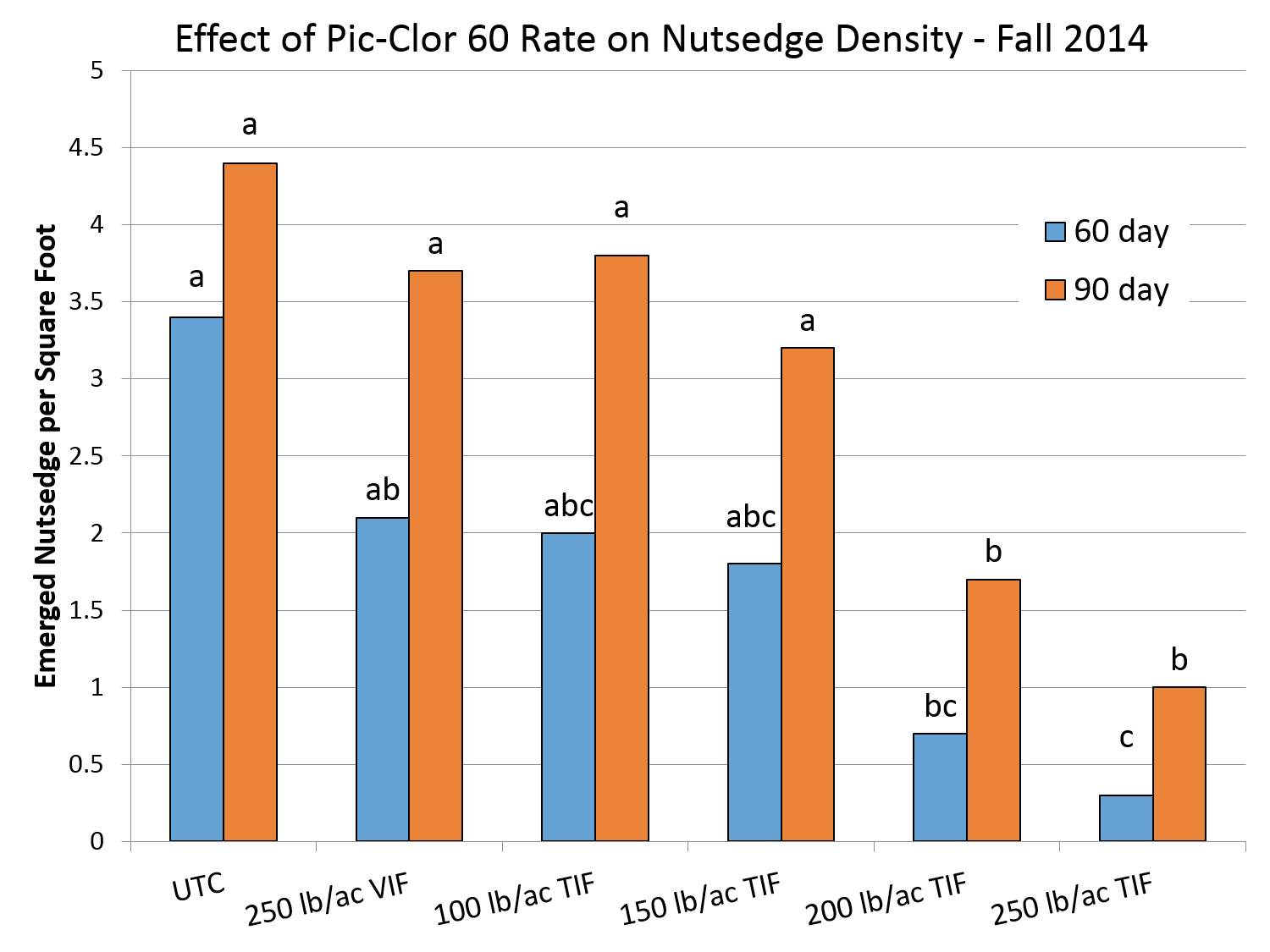
Plastic mulch technology has come a long way in the last 15 years and has made another exponential jump in the last 5 years. Traditionally plastic films used in plasticulture production systems were simple, single layer low density polyethylene films. These are reasonably priced and for the production systems they were and are still used in, they suited the purpose. Historically speaking, they were used in combination with methyl bromide for soil fumigation purposes. Methyl bromide is a fast acting fumigant that rapidly spreads throughout the soil, and was very effective in controlling soil borne diseases and weeds. There was no reason to attempt to keep the fumigant in the soil because it acted so quickly. However, it was discovered that methyl bromide was an ozone depleting substance and a global effort was undertaken to eliminate the use of ozone depleting substances. Methyl bromide use was phased out completely by 2005, and was only used under critical use exemptions, which are now nearly completely gone in the U.S.
The phase out of methyl bromide spurred on the development of tools that could squeeze more efficacy out of annually declining use rates. Out of this period came virtually impermeable film (VIF). VIF was different than standard film because it contained a nylon polymer sandwiched within the layers of standard plastic. This polymer made the film less permeable to fumigants. Less permeability meant that fumigant was kept in the ground longer and thereby exposed weeds and pests to fumigant vapor for a longer period of time, even when less fumigant was applied. This allowed producers to maintain pest control efficacy with less fumigant, which saved money. Methyl bromide use is now gone for pre-plant fumigation in Florida, and growers are left with other options such as Telone, chloropicrin, Vapam, K-Pam, Paladin, and now Dominus.
Most who have used methyl bromide and transitioned to other fumigants have learned that they are not as effective or as user friendly as methyl bromide. In 2007 new plasticulture film was introduced and was coined totally impermeable film (TIF). TIF is different than VIF because it contains a different barrier polymer, ethylene vinyl alcohol (EVOH). EVOH is much less permeable to gasses than the nylon polymer used in VIF. It was thought that by using an even less permeable film, less fumigant could be used with TIF and pest control efficacy would be improved with available fumigants.

Research has demonstrated that this is in fact true, with many fumigants use rate can be reduced by 20-30% while maintaining efficacy. Tables 1 and 2 show the results from experiments investigating reduced fumigant use rates combined with TIF. The other benefit of TIF use is reduced input costs. Economic analysis shows that with Pic-Clor 60 and Paladin, a 20% reduction in use rate under TIF can save $30-60 per acre, respectively.

Though TIF mulch can provide substantial benefit there are also implications for its use. Because it retains fumigants so effectively, it has the potential to extend plant back periods, especially in the spring when cool wet conditions are common. Like any new technology there will be hurdles in adoption, but TIF warrants consideration by producers utilizing fumigants.
For more information please see the following publications:
Reduced Rates of Dimethyl Disulfide In Combination With Totally Impermeable Film Mulch
Vegetable Production Handbook: Chapter 4. Integrated Pest Management
Or contact Josh Freeman
University of Florida Vegetable Specialist
NFREC Quincy
155 Research Road
Quincy, FL 32351
Office – (850) 875-7128
joshuafr@ufl.edu
 0
0

Comments:
May 17, 2016
You or your Master Gardener Coordinator can contact the author of the article Gary Knox at the NFREC for possible tour information.
May 13, 2016
Hi--my name is Pat Watkins and I am a master gardener in Columbia County, FL. I am trying to put together field trips for my group and wonder where I can find info about the Gardens of the Big Bend. If field trips/group tours are not available, then I am personally interested in the Magnolia Gardens. Where can I find out about that, please?
April 21, 2016
One of my favorites! Nice article - we enjoyed speaking with the Gardening Friends last week and glad we had time to walk through the garden first. Keep up the good work! Thanks Donna
April 19, 2016
Dear Joe: I work with tomato in Brazil, west part of S.Paulo State, and so far TSWV in one of most important virus disease in my area. This article is very important, because I can now be more confident that there is a new strain (TSCV) of tospovirus also occurring in my field. Hopefully TSWV tolerant hybrid tomato could be also be tolerant to this new strain TSCV. Vanderlei Barbosa (Agronomist, tomato grower)
April 1, 2016
Good Morning Dr. Ober - Do you have any information on building bat boxes? We would like to build some to put down by our pond on our property - Thanks, Donna D
January 25, 2016
Yes I think these numbers are set by the Ag Census and are not completely accurate.
January 22, 2016
Would love to have our 6 acres of Blueberries in Jackson County. Mary Veitch Veitch's Blueberry Farm 7772 Howell Rd Sneads, FL 32460
November 16, 2015
Is there a soil fumigant that works on Sclerotium rolfsii fungus? We have a home garden and have rotated crops but are running out of options.
November 16, 2015
Follow the links in this article and go to the App store that applies to your smart phone. If you don't have a smart phone, you can get similar information on the following website: http://www.iowabeefcenter.org/estrus_synch.html
November 16, 2015
Follow the links in this article and go to the App store that applies to your smart phone. If you don't have a smart phone, you can get similar information on the following website: http://www.iowabeefcenter.org/estrus_synch.html
November 14, 2015
I would like to receive the AI cow calculator
October 27, 2015
It is a relatively new byproduct but our first estimates based on digestibility and nutrient analyses indicate that the TDN of B. carinata meal should be around 70-75% TDN.
October 6, 2015
What is the average TDN value for carinata meal?
August 30, 2015
Have you tried fixation clover ? I am thinking about in north Jefferson county
June 27, 2015
I would like to receive the calculator
June 24, 2015
Thanks for your comment! The Black Diamond series of crapemyrtles have been planted at the UF North Florida Research and Education Center (outside Tallahassee). An older, outstanding planting can be found at the Louisiana State University Hammond Research Center, if you happen to be traveling along I-10 in Louisiana.
June 24, 2015
I found this article most timely as I just purchased my first crape myrtle ever. It is the black diamond series with red blooms. I can't wait to see how well this performs here. I hope eventually to plant it in my yard also at my home in Brevard county(Melbourne) also. Are there any evaluations ongoing for this new black diamond? It's the first crape myrtle ever that I liked well enough to plant. Thanks!!!!!
June 23, 2015
Hi Gary, I was just reading the crapemyrtle article and then looked at the bottom to see it was by Gary Knox. Marilyn (Bennett) Akers and I live in Elberta, AL (near Pensacola) six months a year. We've planted several crapemyrtle at our home there. I retired from Purdue Extension 2 summers ago. In case you don't remember, Marilyn was Phil Carpenter's grad student. She say hi! I got a Master's in Botany & Plant Pathology. I was Purdue Extension Educator, Ag & Natural Resources for 30 years. All in Boone County, (Lebanon) less than an hour from W. Lafayette. We still have our home in Lebanon, too. Doug Akers
February 6, 2015
Excellent, and to the well trained ear, this article may well be the best introduction to profitable grazing for all ranchers, and not just for cattlemen. "Adjusting the stocking rate...is the most important grazing management tool to improve forage utilization." Well said, but rotational grazing only marginally adjusts the stocking rate and still allows the animals to pick and choose what they eat, taking the best and leaving the worst--thereby affirming that animals don't make good business decisions. Adjusting the stocking density (not rate) using management intensive grazing whereby one restricts the amount of available forage insures the animals consume only an amount of forage required to meet their demands for the day and are then released the next day into a new paddock (subunit). The amount of acreage provided daily can easily be estimated while considering all the factors listed above. The key is inexpensive temporary electric fencing and a good eye for growth rate. For those willing to follow the successful and disregard the "That won't fly around here Sonny"-mentality, I'd point you to "Management-Intensive Grazing: The Grassroots of Grass Farming" by Jim Gerrish; or visit http://www.americangrazinglands.com/
February 6, 2015
Take a look at this link for info on Crapemyrtle Pruning. http://edis.ifas.ufl.edu/ep399 Thanks, Matt
February 6, 2015
What level of pruning is appropriate for a Crepe Mytle? Is there any or should I just let it grow? Thanks! Phil
February 6, 2015
We don't have a button yet..... Just copy and then paste the URL on your facebook page and post it...this will achieve the same effect.
February 4, 2015
I looked for a Facebook "Share" button.
December 22, 2014
please send me a catalog on you January 17 2015 florida bull test sale. Kenneth avery 2993 county road 67 Hartford Alabama 36344.
December 5, 2014
Finally! Would you be able to supply me a list of sellers of trees that are the most scab resistant? I believe now would be a good time to plant a few. Regards, Tom
August 4, 2014
I wrote an article few weeks ago on that very topic. Check out this article: http://nwdistrict.ifas.ufl.edu/phag/2014/07/18/tips-for-controlling-armyworms-in-hay-fields/
August 1, 2014
Other than cutting my hay field, what can be done when army worms are found ? Is there any preventive measure that can be taken to help prevent army worms ? Will adding sulfur to my fertilizer help prevent army worms ? If so how many pounds to the acre ? What can be sprayed to kill army worms ?
July 19, 2014
Is there any Balansa Clover seed available for sale to the public? I would love to try some on my farm. Hope I can get over and see all the projects you all have going on. Tim Tucker Uriah AL.
July 16, 2014
I adore pomegranate fruit and shrubs, so I was especially thrilled to learn of this new variety. However, I’m not sure how I feel about one that doesn't produce edible fruit . I've had a pomegranate in my greenhouse for several years, and although it doesn't produce much fruit, it’s always a beautiful, flowering plant. I’d recommend them to anyone. As to fruit, I think the Wonderful variety (as its name implies), is simply wonderful and the most delicious variety I've tried. Richard
May 30, 2014
Hello Peter, My wife and I are new at planting trees. We have 20 acres in North Walton County and the pH is 5.7. Please correct me if I am wrong, but it looks like the fuyu species is the best all-around fruit. We are looking at planting 5-10 trees. In addition to applying fertilizer as you discussed, should we address the pH level as well? Can we obtain the trees through the extension office? If not, can you recommend a source where they are available? We are open to any suggestions you may have. Thank you in advance for your help- Brett
January 12, 2014
sir, can i have more information on above two newly introduced variety of peanuts? if so i will be thankfull to you, I from India guajrat state and we are the farmers and maily cultiviting peanuts on our farms, here is production is around 1ooo kg per acre i.e. 2500 kg per hectare, so please let me know about new variety Thanks
January 10, 2014
The sort of trimming known as "crape murder" will not ensure the long term health of the crapemyrtle. Those repetitive cuts will allow disease and rot to enter the tree. Older cultivars might be in too much shade and not blooming to their full potential. They may also be suffering from powdery mildew, scale or sooty mold. Thinning of the interior of the tree may help. See this publication on crapemyrtle pruning for more information.
January 8, 2014
I love crepe myrtles of any kind. I guess it reminiscent of my grandmother's gardens. In southwest Florida she never cut back our crepe myrtles and they were more like the last photo in bloom. However, here in the Panhandle everyone does what I my sister and I call crepe murder, cutting the trees back. I want to know what is really appropriate. I've always said this was improper, but I notice that the trees that are cut this way to appear more healthy and vibrant each spring. I've moved to a home that has several varieties and the older ones are not doing well (blooming profusely) but I'm afraid it's because I have refused to cut the trees, I just trimmed them a little. Thanks for your help.
September 15, 2013
Dr. Anderson was talking about the gradual cooling that occurs normally in Northwest Florida. More damage occurs with extreme temperature changes, like can often happen in South Florida.
September 14, 2013
What is meant by cold pre-conditioned trees in your article above? Is that something that nature does, or something that the grower can do?
Comments are closed.